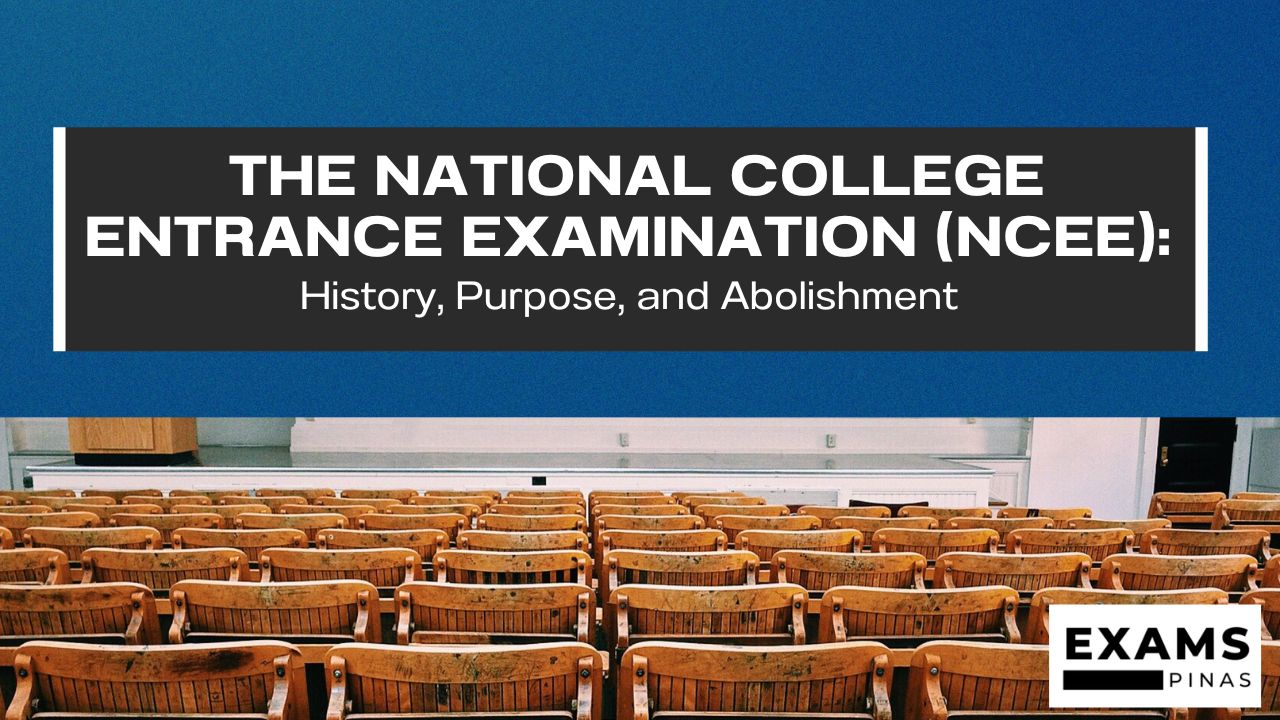The National College Entrance Examination (NCEE) held a prominent place in the history of Philippine education for several decades. This standardized assessment served as a pivotal milestone for aspiring college students. This article delves into the rich history, the original purpose, and the eventual abolishment of the NCEE, shedding light on its influence on the country’s educational landscape.
The Genesis of the NCEE
The NCEE was introduced in the Philippines in 1978 under the administration of then-President Ferdinand Marcos. Its primary objective was to provide a fair and standardized method of assessing the academic aptitude and readiness of high school graduates for higher education. By implementing a uniform testing system, the government aimed to streamline the admissions process and ensure that students from all walks of life had equal opportunities to pursue tertiary education.
Structure and Content of the NCEE
The NCEE comprised sections that evaluated key subject areas, including Mathematics, Science, English, and Social Studies. It aimed to measure a wide range of cognitive skills, from critical thinking to problem-solving abilities. The rigorous nature of the examination garnered both acclaim and scrutiny, as it became a defining factor in determining eligibility for admission to colleges and universities across the country.
Impact on the Education System
Throughout its existence, the NCEE played a significant role in shaping the Philippine education system. It set a standard for academic excellence and encouraged students to strive for higher levels of achievement. Additionally, it prompted educational institutions to continuously enhance their curricula to align with the demands of the examination.
Challenges and Controversies
Over time, the NCEE faced criticism for various reasons. Critics argued that it placed undue pressure on students, leading to a culture of rote memorization and excessive focus on exam preparation. Additionally, concerns were raised about the socio-economic disparities it may have perpetuated, as some students had access to extensive review materials and preparatory programs, while others did not.
The Abolishment of the NCEE
In 1994, the government under President Fidel V. Ramos decided to abolish the NCEE. This decision stemmed from a desire to provide higher education institutions with more autonomy in their admissions processes. Instead of a single, nationwide examination, colleges and universities were given the authority to establish their own entrance exams or utilize other criteria for admissions.
Legacy of the NCEE
Despite its abolishment, the NCEE left a lasting legacy on the Philippine education system. It paved the way for discussions on the most effective methods of assessing academic potential and spurred ongoing debates about standardized testing in the country.
The National College Entrance Examination served as a cornerstone in the history of Philippine education. While its abolishment marked a significant shift in admissions procedures, the NCEE’s impact continues to resonate within the broader educational discourse. It remains a testament to the evolving nature of educational evaluation and the enduring pursuit of providing equal opportunities for all students in the pursuit of higher learning.

